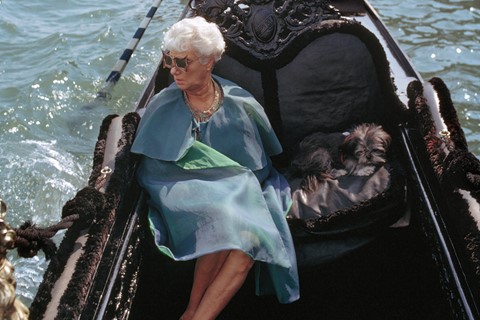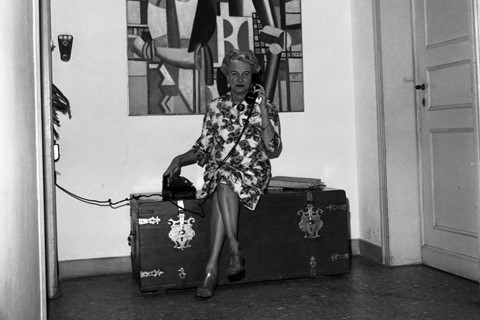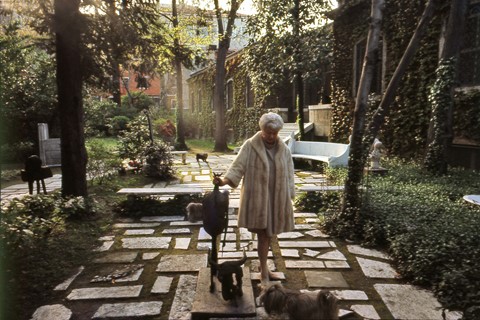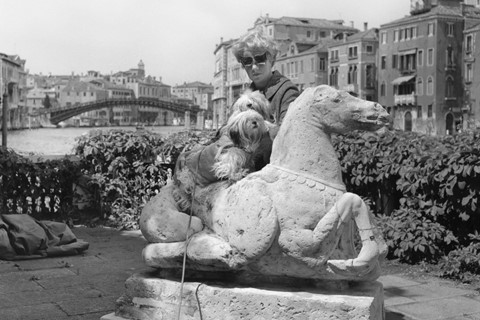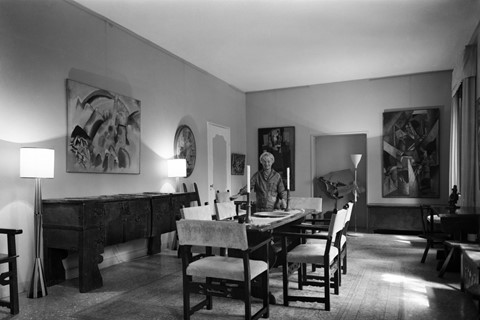As an exhibition focusing on Peggy Guggenheim’s collecting opens in Venice, we speak with The Last Dogaressa’s curator – Guggenheim’s very own granddaughter – about showcasing the works she treasured
“It’s wonderful to be back, not as a granddaughter but as a director,” says Karole Vail, director of the Peggy Guggenheim Collection and granddaughter of the same art world icon. “Professionally I couldn’t wish for a better job.” Vail is here in Venice – on the rooftop of her grandmother’s famous unfinished palazzo, which overlooks the Grand Canal – to open an exhibition celebrating Guggenheim’s life and work. 2019 marks 40 years since Guggenheim’s death and 70 since she made the all-important move to the Floating City.
First visiting Venice on her honeymoon, she “fell in love with the city immediately” according to Vail and “knew she wanted to come back here one day”. That day came in 1948, when she was invited to exhibit her collection as part of the Venice Biennale. This exhibition, titled The Last Dogaressa and curated by Vail and Gražina Subelytė, will shed light on how Guggenheim significantly added to her collection during her 30 years in Venice.
Though Vail remembers coming to La Serenissima on family holidays, curating this exhibition was a matter of putting aside personal memories and dealing with the legacy of her grandmother. She started by immersing herself in everything hidden within the walls of the palazzo itself: “I began by spending time in the galleries and the storage facility of the museum, viewing all works in our holdings. I wanted to exhibit as much of the collection as possible.” It’s safe to say that she’s achieved that aim: The Last Dogaressa showcases both the works Guggenheim collected pre-Venice, and those she purchased during her time as a resident from 1947 to 1979.
Her move to Venice marked the beginning of what Vail describes as a new phase of collecting, a period in which she began supporting local artists and acquiring their works. She was, says Vail, eager to meet new artists and art personalities, and did so via eating out, frequenting a restaurant called All’Angelo which was known as ‘the artists’ hangout’.
Guggenheim was generous with the artists she believed in, not just buying their work but investing in their lives – when she met a young Tancredi in 1951, he ended up living and working in her basement. Vail proudly notes how Guggenheim was not afraid to take risks, both in what she bought and who she supported. “She was fearless in her art choices,” says Vail. “Even if modern art perplexed much of the public at that time, her commitment and resolve to promote the most contemporary art of her time was unshakeable. She was truly ahead of her time”.
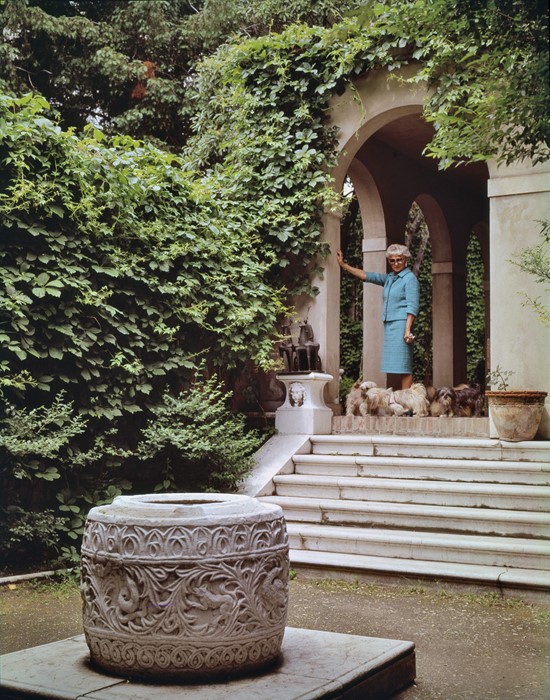
To walk through this exhibition is to be reminded just how integral art was in Guggenheim’s life. Take Grace Hartigan’s Ireland (1958), the largest painting in the show – Vail recalls touchingly how Guggenheim wrote to Hartigan from Venice after she had acquired the “monumental” painting on a visit to her New York studio in 1959, telling her “that she had hung it prominently on her living room wall”. Art was alive for Guggenheim, through the works on her walls, and the artists who created them: the people who filled her life.
Alongside lesser-known items in her grandmother’s collection – such as a gloriously futuristic section dedicated to vibrant metallic strands of Optical and Kinetic art from the 1960s – The Last Dogaressa presents previously unseen material from Guggenheim’s archives. Pages from personal scrapbooks reveal a certain meticulousness, in Vail’s words: “She wanted each episode of her life to be represented rightly.” To peek at these newspaper articles, photographs, and ephemera is to see more clearly that this honorary Venetian’s life was an art unto itself.
Peggy Guggenheim: The Last Dogaressa is at The Peggy Guggenheim Collection, Venice, until January 27, 2020.

